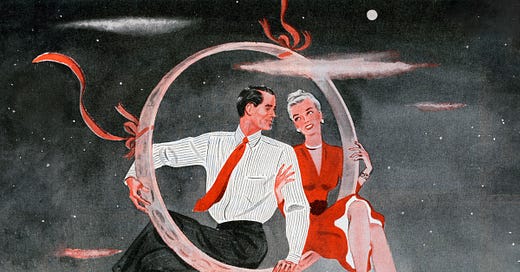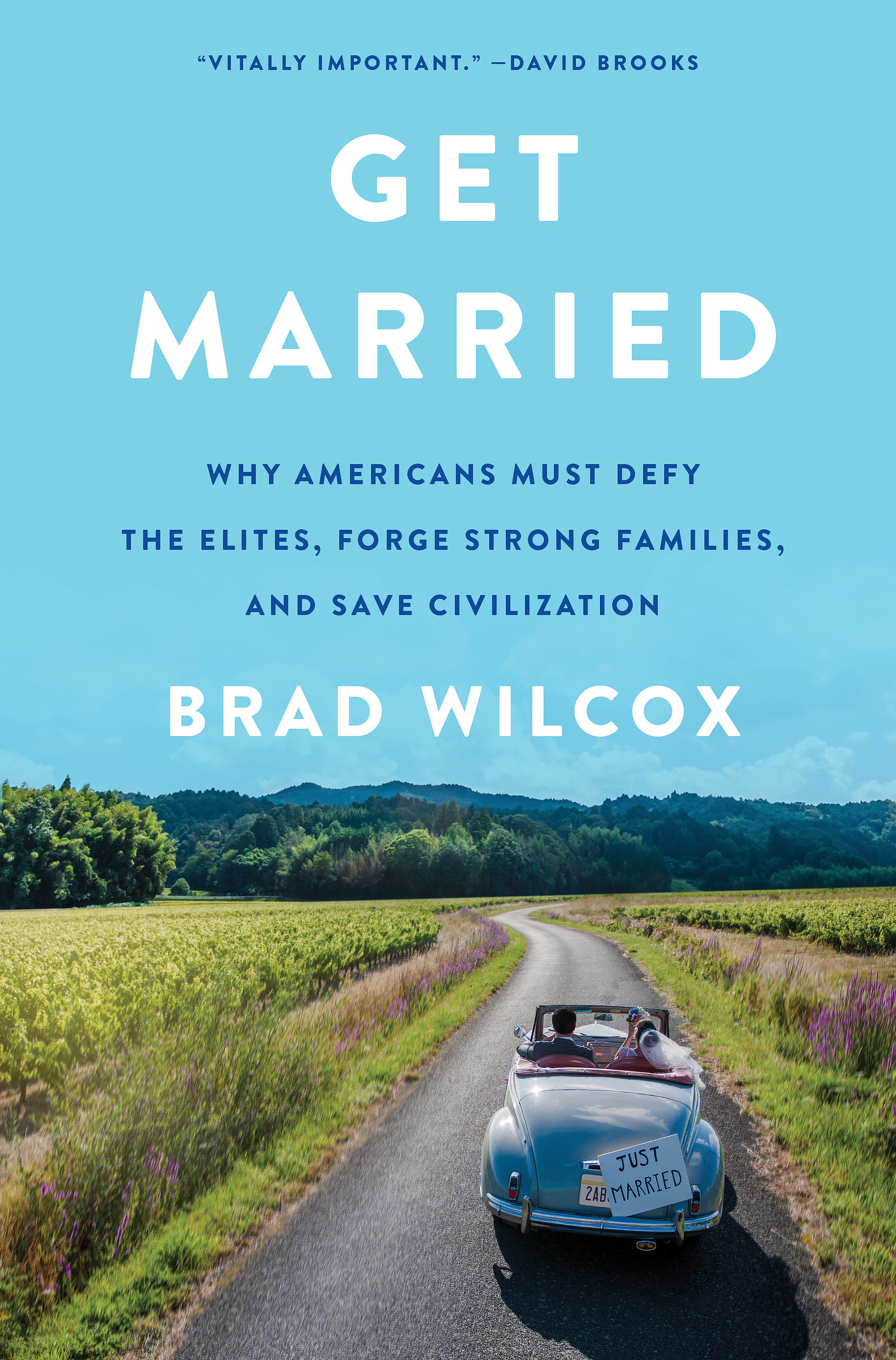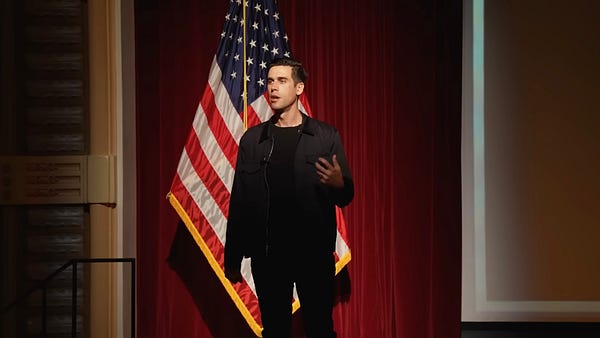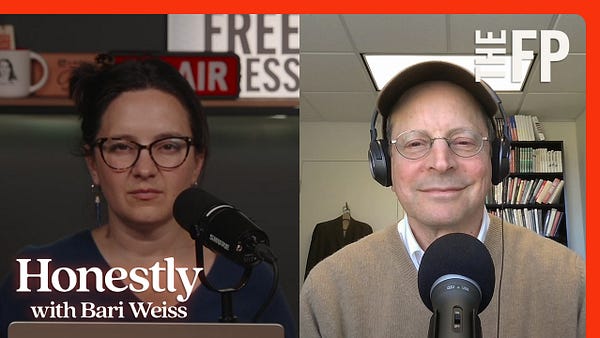
The Free Press

Isn’t marriage a trap, mostly for men? Don’t most married couples end up getting divorced? And aren’t most men happier when they’re single?
These are the kind of questions I get from young men whenever I make the case for marriage at speaking events at colleges and high schools across the nation—recently in North Carolina, Virginia, Texas, and Utah.
I don’t need to ask where these men heard that marriage is a trap. It is a message invariably repeated on the online right, usually by Andrew Tate, and it’s reaching a lot of teen boys—even a group of Mormon boys that I spoke with last month in Salt Lake City.
If you haven’t heard of Tate, he is the biggest voice in the online manosphere today—with more than 11 billion views on TikTok alone. A 37-year-old former kickboxer who has been described as the “king of toxic masculinity,” he believes the institution is a bad deal for men in our egalitarian age. (He was also charged in 2023 with rape and human trafficking in Romania.)
“I don’t think many men actually benefit from marriages or relationships anymore,” said Tate on a recent podcast. In Tate’s view, any man in his right mind ought to stay single, make lots of money, and play with his toys (Tate is partial to his Bugatti), rather than make a long-lasting commitment to love.
Tate is joined by Pearl Davis, a female anti-feminist online influencer who recently posted on X, “I am anti marriage as it is today. I think it’s silly to think marriage is a good deal for most men today.” She claims that about 67 percent of marriages end in divorce, and that because most divorces are initiated by women, scores of men are divorced unwillingly and unjustly. (This is also why she believes that divorce should be illegal.)
The anti-marriage chorus is also rising on the opposite end of the political spectrum. But this group believes marriage is a bad deal for women.
Consider this recent headline from Bloomberg: “Women Who Stay Single and Don’t Have Kids Are Getting Richer.” Or The Atlantic in 2019, offering “The Case Against Marriage.” Or, in 2021, The New York Times with “Divorce Can Be an Act of Radical Self-Love.”
In the Times piece, law professor Lara Bazelon argued for what might be called the me-first divorce: “I divorced my husband not because I didn’t love him. I divorced him because I loved myself more.”
The message is clear: leaning into work, rather than family life, is the path to prosperity. But this seductive message in our individualistic age is completely at odds with the facts.
Consider this: in 2020, married mothers ages 18 to 55 had a median family income of $108,000, compared to $41,000 for childless single women in the same bracket, according to the 2020 American Community Survey. That’s more than twice as much, even if it’s split with a spouse. And as married women head toward retirement in their 50s, they’ve typically accumulated $357,000 in median assets, compared to less than $30,000 for their single peers, according to the National Longitudinal Survey of Youth (NLSY).
The same applies to men. Stably married men heading toward retirement have a staggering 10 times more assets than their divorced or never-married male peers, the NLSY data indicate. (The wealthy Tate is an outlier.)
How about emotional riches?
Well, no one calls their lives happier and more meaningful than men and women who are married, according to the 2022 General Social Survey (GSS). Women ages 18–55 who are married are almost twice as likely to be “very happy” with their lives (37 percent), compared to their single peers (19 percent). Married men ages 18–55 are also more likely to be “very happy” (34 percent) than their peers who are not married (13 percent). Meanwhile, 23 percent of unmarried women ages 18–55 say they are “not too happy” with their lives, compared to 13 percent of married women.
And no, just living together doesn’t cut it. That’s because cohabitation is less committed, more unstable, and generally less happy than marriage.
In fact, marriage is a better predictor of happiness than education, work, money, frequent sex, or regular religious attendance. And despite what Pearl Davis claims, most marriages don’t end in divorce. Only about 40 percent do.
Many people who spoke to me for my new book, Get Married, echoed these feelings.
Katherine, a 40-year-old woman in Virginia, told me that “being married has given me [financial] stability, a deeper sense of meaning in the world, and confidence.” Even though her life is more “messy,” with two young kids in the mix, than it was when she was single, she said marriage and family life make her “happy in a more profound way.”
By contrast, a woman I will call Taylor prioritized a career in digital marketing in her twenties over finding the one, and is now in her mid-thirties and regretting that strategy. If she could go back in time, she told me, “I would actually focus on finding a husband a little bit earlier.”
Meanwhile, a man I’ll call Scott, 34, who is unmarried and living in the outer suburbs of Washington, D.C., has an engaging career as a military contractor, a house of his own, and a six-figure salary. But he said these educational and professional accomplishments are not enough to satisfy him.
“You know, I’ve got degrees on my wall, I’ve got accomplishments and certificates, but it doesn’t mean anything in the end,” he told me. Many days, Scott said he feels alone and at sea. “I have to get up every day and look in the mirror and realize I’m alone. I have nobody.”
Of course, there are plenty of singles who are thriving. But the 2022 GSS also tells us that 27 percent of unmarried men ages 18–55 are “not too happy” with their lives, compared to just 17 percent of married men. In the real world, the Andrew Tate option usually doesn’t work out all that well.
Everyone knows that marriage and fertility are cratering in America. Ideological polarization between the sexes, technological distractions, and rising rates of male joblessness and underemployment are some of the factors driving what I call “the closing of the American heart.” Young adults are dating less, the marriage rate has dropped by more than 60 percent since 1970, and the fertility rate, at 1.7 per woman, is well below the replacement rate of 2.1. About 1 in 3 Gen Zers are projected to never marry and about 1 in 4 Gen Zers will never have children. In other words, a record share of today’s young adults will likely end up not only without a spouse but without any immediate kin.
So this Valentine’s Day, my advice is simple: if you’re in a good relationship, get married. If you’re married, invest more in your relationship. Date nights help, as do shared checking accounts to minimize your chances of landing in divorce court. And if you’re not dating but would like to, expose yourself to more in-person activities—from joining your local church to volunteering at the area food bank to attending that office party you’re tempted to skip.
In short, defy the atomizing, me-first messaging of our solipsistic age—and say “I do.”
Brad Wilcox is professor and director of the National Marriage Project at the University of Virginia, Future of Freedom Fellow at the Institute for Family Studies, and nonresident senior fellow at the American Enterprise Institute. This essay is adapted from his new book, Get Married: Why Americans Must Defy the Elites, Forge Strong Families, and Save Civilization, published February 13 by HarperCollins.
And for a longer discussion on the benefits of marriage, and of growing up in a two-parent household, listen to Melissa Kearney on Honestly.
Become a Free Press subscriber today:















Getting married is not the easy path. We've been married for 42 years and it takes work, sacrifice, a lot of communication and cooperation (and date nights/trips away) to pull it off -- but there's nothing that compares to the fulfillment of knowing you have each other through thick and thin, and children around you to buoy you up. A successful marriage will rub selfishness off your soul, and in return is joy and peace that is out of this world.
Just a word about “women file for divorce more than men.” There is a reason for that. Men generally think the status quo is fine and won’t listen when told it isn’t. My situation was that my husband moved out to be with his girlfriend but would not sign the divorce papers, probably so he could tell said girlfriend that his Evil Wife would not give him a divorce. I pushed the issue, so yes, this Evil Woman filed for divorce (helped along when Saintly Girlfriend got pregnant).